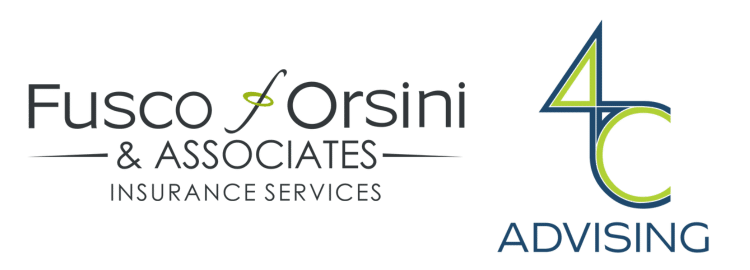Top 3 Recommended Policies

The wood framing industry in California is a vital segment of the residential construction market, projected to reach $6.2 billion by 2025 with nearly 8,000 establishments employing over 44,000 workers. This booming sector is not only a significant contributor to the state’s economy but also a demanding and complex field where risks are inherent. For framing contractors operating in California, securing the right insurance coverage is essential to protect their business, employees, and projects from unforeseen events.
Understanding the nuances of California framing contractor insurance requires insight into the industry’s scale, typical risks, and regulatory environment. This article will provide a comprehensive overview of what framing contractors need to know about insurance, including the types of coverage available, factors influencing premiums, and why insurance is a critical investment for success and sustainability in this competitive market.
For those interested in the industry’s profile and growth trends, the California Framing Contractors Association offers valuable insights into the workforce and operational dynamics of framing companies.
The Scale and Importance of the California Wood Framing Industry
California’s wood framing industry is a cornerstone of residential construction, accounting for a substantial portion of new home builds. In 2024, wood framing represented 94% of single-family home construction completions, marking a steady increase from previous years. This dominance underscores the industry's critical role in housing development and the demand for skilled framing contractors who can deliver quality and efficiency.
With approximately 7,930 establishments employing 44,763 workers, the industry supports a large workforce engaged in physically demanding tasks. Framing companies typically employ around 40 people for a ten-house release, making framing the largest trade in residential construction by labor force size. This scale of operation highlights the need for comprehensive insurance plans that cover a broad range of risks, from worker injuries to property damage and liability claims.
The industry’s projected growth to $6.2 billion by 2025 reflects ongoing demand and investment, but also brings increased exposure to risks that framing contractors must manage proactively. For more detailed statistics on the industry’s size and employment, the IBISWorld report provides an authoritative overview.
Moreover, the wood framing industry in California is not just about numbers; it is also deeply intertwined with the state’s environmental policies and sustainability efforts. As the state grapples with climate change and the need for eco-friendly building practices, many contractors are adopting sustainable sourcing of materials and innovative construction techniques. This shift not only helps in reducing the carbon footprint of new homes but also appeals to a growing demographic of environmentally conscious buyers who prioritize green living. The integration of sustainable practices into wood framing is becoming a competitive advantage, as consumers increasingly seek homes that reflect their values.
Additionally, the industry faces challenges related to labor shortages and the need for skilled workers. As experienced craftsmen retire, there is a pressing need for training programs that can equip the next generation with the necessary skills. Various trade schools and apprenticeship programs are stepping up to fill this gap, offering hands-on training and education that align with industry standards. By investing in the workforce, the California wood framing industry can ensure its continued growth and adaptability in an ever-evolving market, ultimately contributing to the state’s housing solutions and economic stability.
Key Insurance Coverages for Framing Contractors
Framing contractors face unique risks due to the nature of their work, which involves heavy materials, elevated work sites, and tight project timelines. Insurance policies tailored to these risks are essential to safeguard against financial losses and legal liabilities. The most common types of insurance coverage for framing contractors include:
General Liability Insurance
This coverage protects contractors from claims related to bodily injury, property damage, and personal injury caused by their operations. Given the physical and often hazardous nature of framing work, general liability insurance is a fundamental safeguard against lawsuits and third-party claims. It not only covers legal fees and settlements but also provides peace of mind, allowing contractors to focus on their projects without the constant worry of potential liabilities.
Workers’ Compensation Insurance
California law requires employers to carry workers’ compensation insurance, which covers medical expenses and lost wages for employees injured on the job. Since framing work is physically demanding and performed under varying weather conditions, injuries are a significant risk. Experienced framers and foremen, who can earn upwards of $52,000 and $85,000 annually respectively, depend on this coverage for protection and support. Additionally, having workers' compensation insurance can enhance a contractor's reputation, as it demonstrates a commitment to employee safety and well-being, which can be a deciding factor for potential clients when choosing a contractor.
Commercial Auto Insurance
Framing contractors often use trucks and vans to transport materials and equipment. Commercial auto insurance covers vehicles used for business purposes, protecting against accidents, theft, and damage. This coverage is especially important given the high value of the tools and materials being transported. Furthermore, it can also extend to cover liability in the event of an accident, ensuring that both the contractor and their employees are protected while on the road.
Builder’s Risk Insurance
This policy covers damage to buildings under construction, including framing materials and structures. Since framing accounts for roughly 16.6% of construction costs, protecting these assets from fire, theft, or weather damage is crucial. Builder’s risk insurance can also cover various unforeseen events, such as vandalism or accidental damage caused by subcontractors, making it an essential component of a contractor’s risk management strategy.
Equipment and Tool Insurance
Tools and equipment are vital to framing contractors’ operations. Coverage for loss, theft, or damage helps maintain productivity and reduces financial strain from replacing expensive gear. Given that specialized tools can be a significant investment, having this insurance ensures that contractors can quickly replace lost or damaged items, minimizing downtime on projects. Additionally, some policies may offer coverage for rental equipment, which is beneficial when contractors need to temporarily replace tools that are being repaired.
Choosing the right combination of these coverages depends on the size of the business, the scope of projects, and risk tolerance. Consulting with insurance professionals familiar with the framing industry can help contractors tailor policies to their specific needs. Moreover, staying informed about changes in insurance regulations and emerging risks in the construction industry can further enhance a contractor's ability to protect their business effectively. Regularly reviewing and updating insurance policies is also essential, as it ensures that coverage aligns with the evolving nature of the contractor's operations and the projects they undertake.

Factors Influencing Insurance Costs for Framing Contractors
Insurance premiums for framing contractors vary based on several factors related to the business and the nature of its operations. Understanding these factors can help contractors manage costs while ensuring adequate protection.
Business Size and Revenue
Smaller framing firms, which make up over 70% of the industry and generate less than $500,000 annually, generally face lower premiums due to reduced exposure. However, limited resources may also mean less flexibility in coverage options. Larger firms with higher revenues and more extensive operations typically pay higher premiums but benefit from broader coverage and risk management services. Additionally, larger firms often have the advantage of negotiating better terms with insurers due to their established track record and the volume of work they provide. This can lead to more comprehensive policies that include additional protections such as equipment breakdown coverage or extended liability limits.
Project Scope and Complexity
The size and complexity of framing projects influence risk levels. For example, framing a multi-unit residential complex involves more workers, equipment, and potential hazards than a single-family home. Since framing and trusses represent about 13.6% of new home construction expenses, contractors working on larger projects must consider higher coverage limits. Moreover, the intricacies of larger projects often require specialized skills and equipment, which can further elevate the risk profile. Contractors may need to invest in advanced training for their workforce or implement more stringent safety measures to mitigate these risks, which can also impact their overall insurance costs.
Claims History and Safety Record
Insurance providers assess a contractor’s claims history and safety practices when determining premiums. Companies with fewer claims and strong safety protocols often receive more favorable rates. Given the physically demanding work and exposure to weather conditions, maintaining a robust safety program is essential. Implementing regular safety training sessions and conducting thorough risk assessments can not only reduce the likelihood of accidents but also demonstrate to insurers that the contractor is proactive about minimizing risks. This proactive approach can lead to discounts on premiums and a more favorable relationship with insurance providers.
Geographic Location
Operating in California presents unique challenges, including regulatory requirements and natural disaster risks such as wildfires and earthquakes. These factors can increase insurance costs but also highlight the importance of comprehensive coverage tailored to local conditions. In addition to natural disasters, urban areas may have stricter building codes and higher competition, which can influence both the cost of insurance and the types of coverage needed. Contractors in these regions must stay informed about local regulations and market trends to ensure they are adequately covered while remaining competitive in their pricing. Understanding the nuances of the local market can also help contractors identify potential risks specific to their area, allowing them to tailor their insurance needs accordingly.
Why Insurance is Critical for Framing Contractors in California
The framing contracting industry is highly fragmented, with many small firms competing in a dynamic market. Despite this, the risks associated with framing work are substantial, making insurance not just a legal requirement but a business imperative.
Framing contractors rely on a skilled labor force willing to perform physically demanding work in all types of weather conditions. This reliance on human capital means that workers’ compensation and liability coverage are essential to protect both employees and employers from financial hardship in case of accidents. Additionally, the nature of framing work often involves working at heights and handling heavy materials, which increases the likelihood of injuries. Therefore, having robust safety protocols in place, alongside comprehensive insurance, is crucial for minimizing risks and ensuring a safe working environment.
Moreover, the framing stage constitutes a significant portion of construction costs. Protecting investments in materials, labor, and equipment through insurance safeguards a contractor’s financial stability and reputation. Without proper coverage, a single incident could result in costly lawsuits, project delays, or even business closure. Furthermore, the financial implications of a poorly managed risk can extend beyond immediate costs; they can affect future contracts and client trust. Clients are increasingly vigilant about hiring contractors who demonstrate responsibility through adequate insurance coverage, which can serve as a competitive advantage in securing new projects.
Given the industry’s scale—employing over 85,000 workers nationwide and generating $26.3 billion annually—framing contractors must prioritize risk management. The complexities of navigating insurance policies can be daunting, but understanding the various types of coverage available, such as general liability, professional liability, and builder's risk insurance, can empower contractors to make informed decisions. For a deeper dive into the framing contracting industry’s structure and challenges, Vertical IQ’s industry report offers comprehensive analysis. This resource can help contractors identify specific risks associated with their operations and tailor their insurance coverage accordingly, ensuring they are adequately protected against unforeseen circumstances.

Tips for Selecting the Right Insurance Provider
Choosing an insurance provider that understands the framing industry’s unique needs can make a significant difference in coverage quality and claims support. Here are some tips for framing contractors in California:
- Look for Industry Expertise: Select insurers with experience in construction and framing to ensure policies address specific risks.
- Compare Coverage Options: Evaluate different policies for coverage limits, exclusions, and additional endorsements relevant to framing work.
- Review Financial Stability: Choose providers with strong financial ratings to ensure they can pay claims promptly.
- Consider Bundling Policies: Combining general liability, workers’ compensation, and commercial auto insurance can often reduce premiums.
- Ask About Risk Management Support: Some insurers offer safety training and loss prevention resources that can help reduce claims.
Partnering with an insurance broker who specializes in construction can also streamline the process and help identify cost-effective solutions tailored to your business.
Additionally, it’s crucial to read customer reviews and testimonials about potential insurance providers. This feedback can offer insights into their claims process, customer service, and overall reliability. Engaging with other contractors in your network can also provide valuable recommendations based on their experiences, helping you to make a more informed decision. Remember, the right insurance provider should not only protect your business but also support you in navigating the complexities of the framing industry.
Furthermore, consider the importance of regular policy reviews. As your business grows and evolves, so too will your insurance needs. An annual review with your provider can help ensure that your coverage remains adequate and relevant, especially as you take on new projects or expand your services. Staying proactive in your insurance management can safeguard your business against unforeseen challenges and liabilities that may arise in the framing sector.
Conclusion
The California wood framing industry is a thriving and essential part of the residential construction landscape, with significant economic impact and workforce demands. For framing contractors, insurance is not merely a regulatory formality but a critical tool to manage the inherent risks of their trade.
From general liability to workers’ compensation and builder’s risk policies, having the right insurance coverage protects contractors from financial losses, supports employee welfare, and ensures business continuity. As the industry continues to grow, with wood framing accounting for an increasing share of home construction, investing in comprehensive insurance is a strategic move that safeguards both current operations and future opportunities.
For framing contractors seeking to navigate the complexities of insurance in California, leveraging industry insights and working with knowledgeable providers can make all the difference in building a resilient and successful business.
Contact Us
Phone
Location




